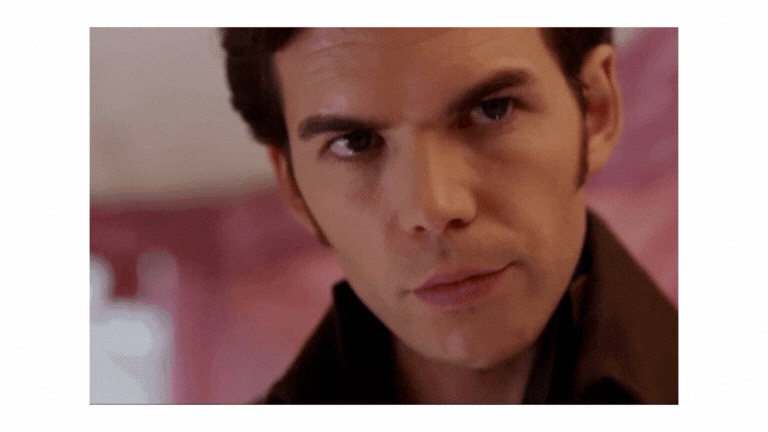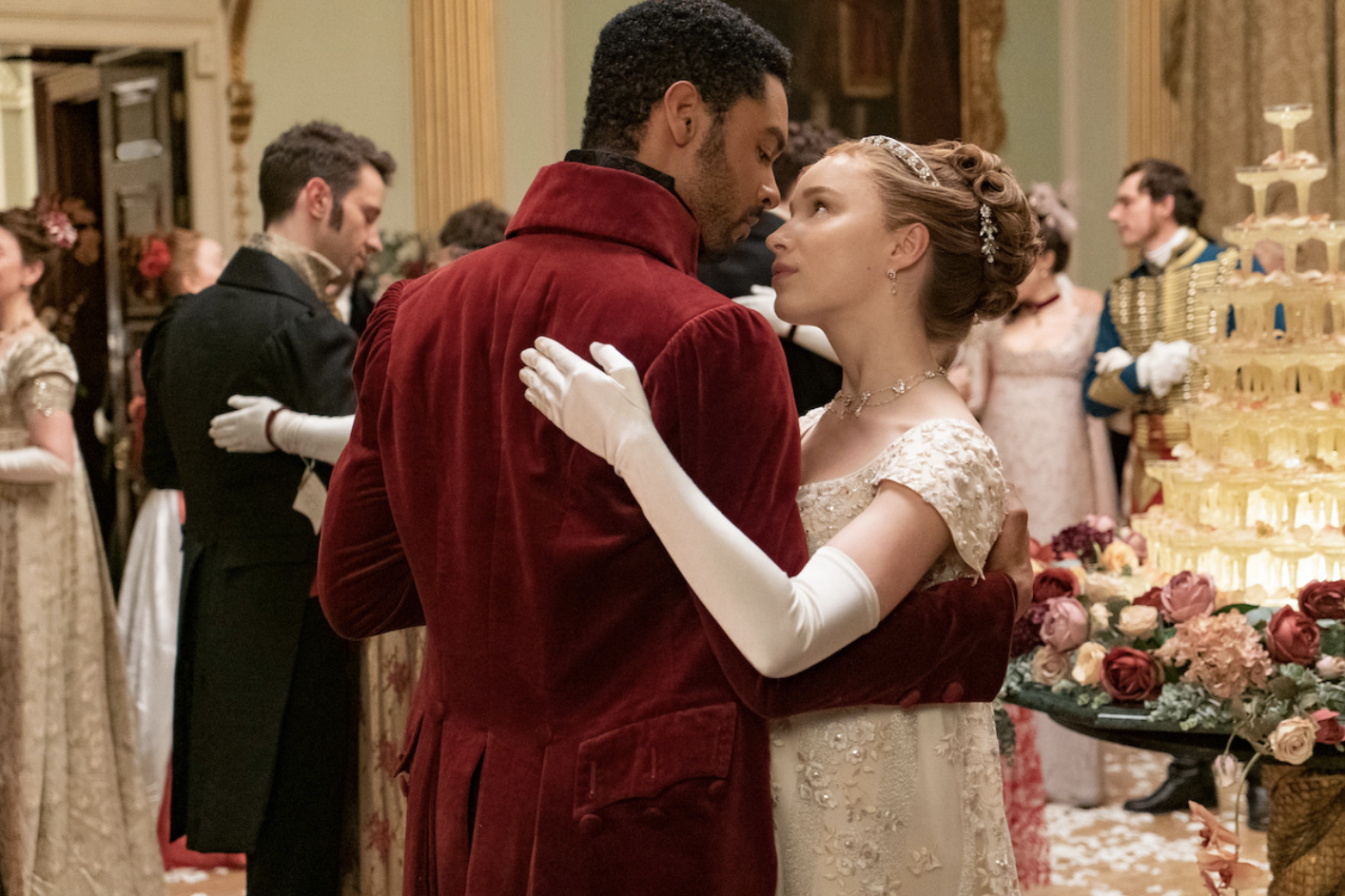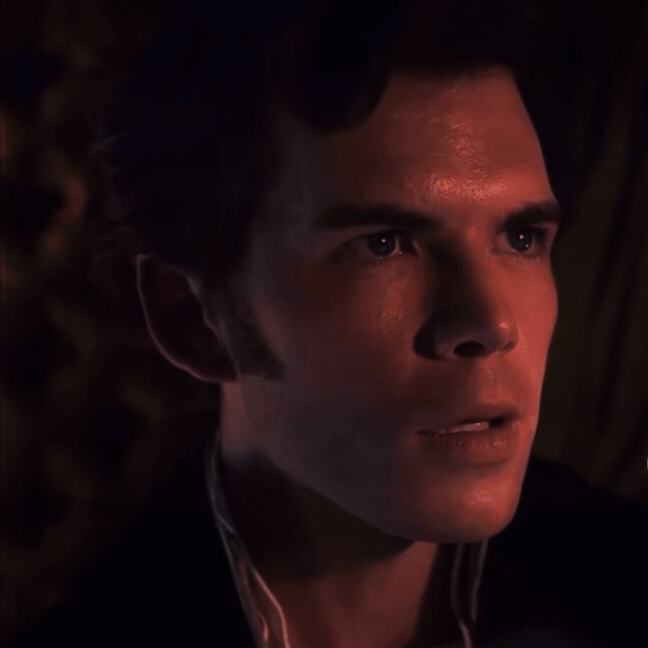Bridgerton Is the Existential Cope We Need
I’ve decided that I no longer want to be stimulated by television.
I don’t want the harrowing, upregulating violence of The Last of Us or the Machiavellian double-speak of House of the Dragon. Instead, the main thing I want to do? Get lost in Bridgerton.
Shonda Rhimes’ ahistorical period-drama series is in its third season. It’s a Regency-era cinematic universe that also includes the spinoff sequel Queen Charlotte. The show is adapted from Julia Quinn’s nearly-30-year-old bodice-ripper Bridgerton book series, meaning it’s wish fulfillment material to begin with, and Rhimes has put her own signature spin on the material. The result? A heady, almost dangerously pure form of aesthetic and moral escapism.
The second half of season 3 will be released on Netflix this Thursday, June 13. Viewers will tune out the real world to discover if Penelope Featherington’s engagement has a happy ending, how the Queen might unmask the gossip writer Lady Whistledown, and what the narrative function of the Mondrich family is. Of course, Quinn’s readers already have most of these answers. Anyway, most of these conflicts feel, given the show’s tone, like they have self-evident resolutions. But Bridgerton viewers are tuning in less for the narrative suspense and more for the vibe. The modern-meets-Regency hairstyles, the Instagrammable faces, the string-arrangements of contemporary pop songs. Call it candy for the senses.
Colin Bridgerton (Luke Newton) + Penelope Featherington (Nicola Coughlan) in Bridgerton S3 (Netflix)
Television has been moving this direction for years. Consider Emily In Paris, an aesthetically beautiful show with a plot that’s practically liquified, as if designed to be watched in the background while scrolling on your phone. Or The Gilded Age, which is gorgeously costumed and deliciously plotless.
But Bridgerton is a perfection of the form. A fever dream where everyone’s faces have been surgically harmonized and the British aristocracy is almost racially equitable and wealthy suitors encourage women to let their most authentic selves shine.
Though ostensibly set in the Regency era, better known to 15-year-old boys as the height of the Napoleonic era, the Vladimir-Putin-of-his-day gets nary a mention.
Instead, the show’s story rises and falls on “marriage plots,” life or death subject matter for women in the early 1800s to be sure, but shaped by deliciously anachronistic ideas about companionship and love.
In the current season, the unmarried Penelope Featherington maintains an emotionally close friendship with the equally single Colin Bridgerton, facing no meaningful consequences beyond the mention of scandal, even as she regularly socializes unchaperoned. Even when characters find themselves embroiled in scandal, as Penelope does early in the season, they don’t suffer long. Character failings — lying, manipulation, gossip — rarely have consequences that linger beyond an episode. And though the threat of spinsterhood looms for many of Bridgerton’s heroines, it’s hard to believe anyone is in real danger of ending up alone and destitute if she dares to hold out for a love match.
Kate Sharma (Simone Ashley) + Viscount Anthony Bridgerton (Jonathan Bailey) in Bridgerton S2 (Netflix)
That’s not a complaint. Right now, I would very much like to be sold a little faith in the power of true love.
Because I’m on edge lately. I’ve been thinking about technology that could completely reset human civilization and about femcel summer. Most days I try to make a point to not see anyone die on my Twitter feed and often I don’t succeed. My anxiety about the upcoming election, record heat waves, international conflicts — it’s all coalesced into a sort of numbness. A functional freeze state.
I was 11 years old when the Western world’s turn-of-the-century optimism was crushed under the dark triad of 9/11 and the War of Terror and the Great Recession. And the world’s existential dread? It showed. Even the campiest franchises got gritty realist reboots.
James Bond swung abruptly from his most absurd iteration, Pierce Brosnan, to his grittiest, Daniel Craig. When Craig threw a punch, there was always the possibility he could actually kill someone. For the first time in decades, Bond bled.
Meanwhile, Christoher Nolan’s Dark Knight trilogy was praised for its moral ambiguity. Previously, film adaptations of the comic book hero, as played by Michael Keaton and then George Clooney, had been ridiculous. Exaggerated. But Batman, with his billions and gadgets in lieu of superpowers, has always been a realist’s superhero. Nolan cranked it up a notch. Where there had once been cartoon magic, there was now a complicated blend of martial arts training, chemical theatricality, and economic maneuvering. The movies seem desperate to provide a credible Batman. “He could exist,” they insist. “Here’s how.”
For all its grit, Nolan’s Batman trilogy was almost counterintuitively hopeful, determined to believe in a higher power than poverty, terrorism, and tragedy.
Batman is an antidote to the specters of organized crime, police corruption, and even, in the final moments of The Dark Knight Rises, nuclear weapons. If Batman’s morality is complex, well, isn’t that almost a case for his existence? He’s humanized. He wields power ambivalently. True, he doesn’t kill anyone but he sure commits plenty of property damage and enough tech surveillance to give Shoshanna Zuboff a coronary. Considering that Batman is not an elected position, he wields tremendous influence over the city of Gotham, with little oversight besides a sharp-tongued butler. Twenty years ago, the idea that Batman felt conflicted about this power was comforting. Moral ambivalence seemed like the best safeguard in a world full of ideologues.
So Nolan’s Batman, in his own way, helped us cope with the existential darkness of the 21st century world.
But now, roughly twenty years later, the cultural pendulum has swung fully in the opposite direction. This is an era of visually stimulating, but emotionally low-stakes pop culture that copes with contemporary political horror by offering a corrective version of reality.
Duke of Hastings (René-Jean Page) + Daphne Bridgerton (Phoebe Dynevor) in Bridgerton S1 (Netflix)
Where cinema of the early 2000s rendered horror in 4K resolution, Bridgerton offers a different kind of comfort, imagining the past as equitable, safe, and clean. The moral goodness of the world is reflected in its shiny visuals. Everything, from the set to the clothes to to the background actors, is unnaturally pretty. If the streets of Nolan’s Gotham looked credibly lived in, the world of Bridgerton is as fabricated as a department store window display. Penelope Featherington, wears acrylics for god’s sake!!
When people complain that too many modern actors have “Instagram face,” they are grappling with this distortion — that commercial art no longer reflects a recognizable reality.
But a show like Bridgerton is less interested in reflecting reality than in modeling a better future. Acrylics, yes, but also women’s empowerment, racial diversity, better mental health support, and democratized orgasms.
I attribute this, in part, to Gen Z’s demand for ethical characters and stories, sourced from ethical artists. There is an increasing blurring around the function of fiction as a thought experiment. Last week, an actor from George Miller’s Furiosa took to the Internet to clarify that his predatory film character was, in fact, a character. It’s increasingly common practice for morally questionable creations to get conflated with their creators — or even with their readers or watchers. Can one appreciate, for example, a film like American Psycho without endorsing its hypnotic consumerism or gut-swirling violence?
(Readers here will note that I really have a thing for Christian Bale.)
Of course, many consumers today can’t watch without feeling instructed. American Psycho was adapted for film by a woman, Mary Harron, who notably amplified the book’s concerns about gendered violence and, yet, more than a few contemporary viewers — and political candidates — read Bale’s psychopathic Patrick Bateman as aspirational, vaunting him to the highest echelons of 4chan worship.
And somehow, the stakes of such a misread feel unbearably high. Moral ambiguity does feel scary now, suddenly intolerable where it once offered a kind of safety.
There is an irreproachable sweetness to the pages of r/BridgertonNetflix, where fans, in a direct rejection of decades of romance-genre tradition, long for a leading man who isn’t a bit of a “rake.” Never mind that desire almost definitionally feeds on the forbidden. Perhaps, in this new era, when every question is a moral one and even the impulses of desire are policed, bad boys are finally out of fashion, too.
Though this moral puritanism comes, I suspect, from a desire to preserve some safe places. Realism has never been less rarefied. Real violence is on our digital doorstep daily, almost impossible to tune out. Today, there is no need for pop culture to offer a gaze into the abyss because the abyss is staring right back. “Refusing to look away” can only be a cultural value when the viewer has a choice of whether or not to look at something in the first place.
I don’t know if reality is darker today than it was 20 years ago. Between the reanimated threat of nuclear apocalypse, escalating effects of climate change, and a multi-front global conflict, it seems possible. But what I do know for sure is that reality is newly inescapable. This is what it means to be hyperconnected. I can’t even keep geopolitics out of a review of Bridgerton.
So, these moments of pop culture whipped cream feel more important than ever, like dollops of optimism in a world that refuses easy answers. The world is going to hell. Let us eat cake.
Rose McMackin is a writer and editor, and writes a weekly newsletter about country music.





